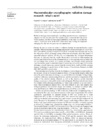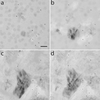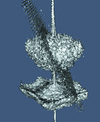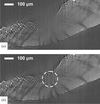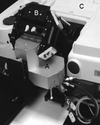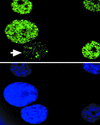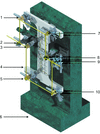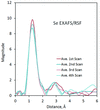issue contents
May 2011 issue
Includes papers presented at the Sixth International Workshop on X-ray Radiation Damage to Biological Crystalline Samples
SLAC National Accelerator Laboratory, Menlo Park, CA, USA, 11-13 March 2010

Cover illustration: Upper panel: X-ray dose-dependent preferential reduction of a nitrate ion in the vicinity of the Cys6-Cys127 disulfide bond of chicken egg-white lysozyme (see De la Mora, Carmichael and Garman, pages 346-357). Lower panel: electron dose-dependent snapshots of a radiation damage series consisting of successive cryo-electron microscopy images of individual molecules of extracellular hemoglobin (see Karuppasamy, Nejadasl, Vulovic, Koster and Ravelli, pages 398-412). These pieces of research, among others, were presented at the 6th International Workshop on X-ray Radiation Damage to Biological Crystalline Samples (RD6) that took place on 11-13 March 2010 at the Stanford Synchrotron Radiation Lightsource in California, USA.
facility information
radiation damage
 access
access access
access access
access access
access access
access access
access access
access access
accessresearch papers
 access
access access
accessHigh-efficiency Fresnel zone plates for hard X-rays by 100 keV e-beam lithography and electroplating
 access
access access
access access
accessNew developments in fabrication of high-energy-resolution analyzers for inelastic X-ray spectroscopy
short communications
current events



 journal menu
journal menu



















